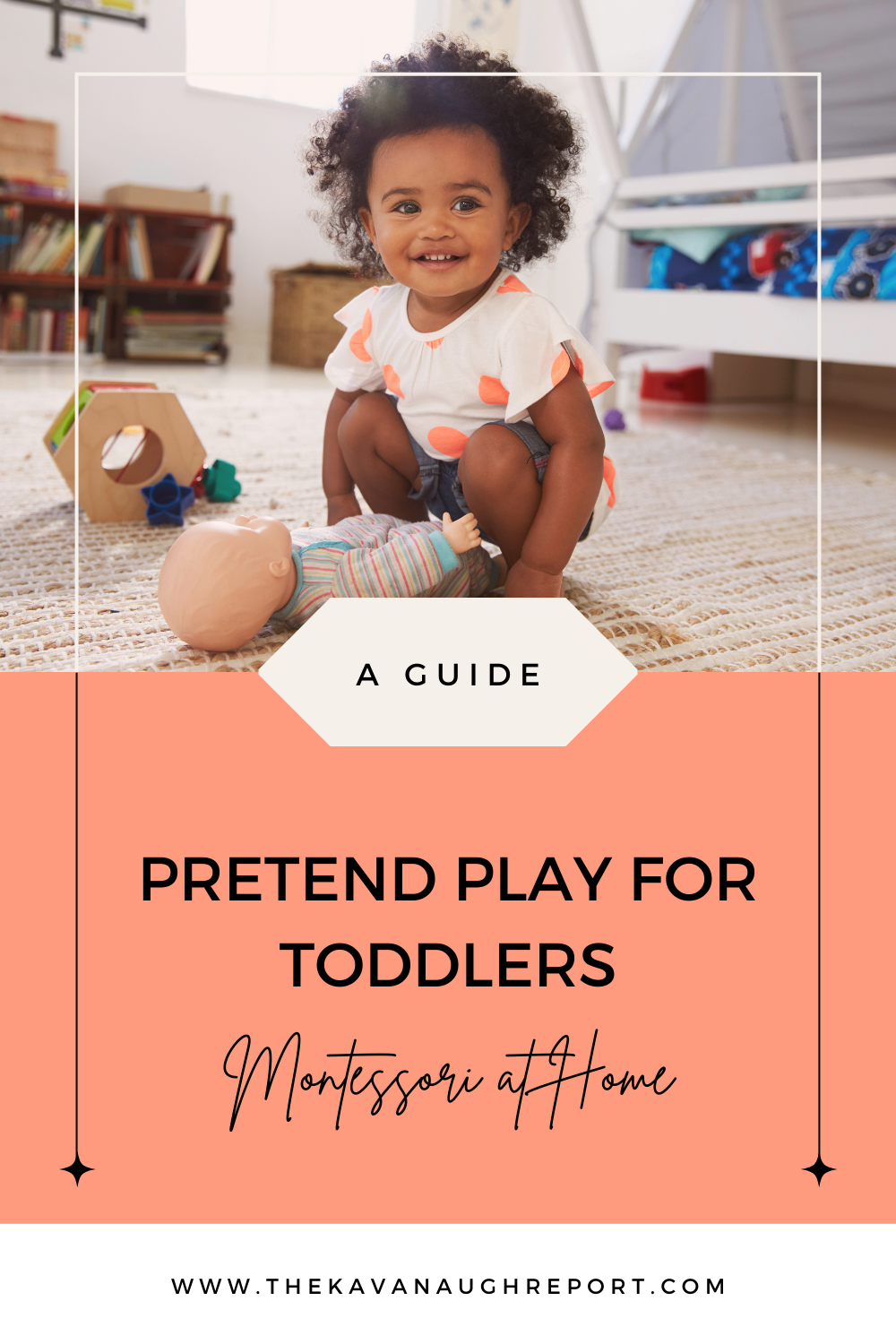Pretend Play in the Toddler Years
- Based on real life scenarios that they commonly see - cooking, doctor, caring for babies, for example. Not as likely to be creating huge scenarios that they haven't experienced.
- Can look like pretend play but when you observe more closely it's often based more in movement: moving things around, dressing and undressing a doll, lining things up, putting in and out of containers. The pretending is secondary to the movement.
- Real life tools are just as engaging as any toy. They are happy to pretend with a real pot and spoon, or a pair of their siblings shoes. The play items are a lot more flexible.
- Often want to engage the adult during this type of play
Supporting Pretend Play with Montessori Toddlers
"The strength of even the smallest children is more than we imagine, but it must have a free play in order to reveal itself." Maria Montessori, The Discovery of the Child
First, we can take a supporting role in the play. We don't need to make suggestions but follow our child's lead when it comes to how to pretend and with what. Sitting back and letting our toddler come up with the play ideas is hard but worth it. Second, we can make our environment open to pretend play. Let them mix pots with blocks, let the baby doll sit in your purse, and be okay with them walking in your shoes. Finally, give them lots of time to make decisions about what they want to play with. This might mean giving them time to engage in practical work with you, but also the freedom to find their own work and follow their needs.
Pretend play is an important part of every toddler's work and it should not be undervalued compared with other Montessori activities. While fascinating, pretend play does change over time, don't miss part 2 of this series:
Montessori at Home: Pretend Play in the Preschool Years




